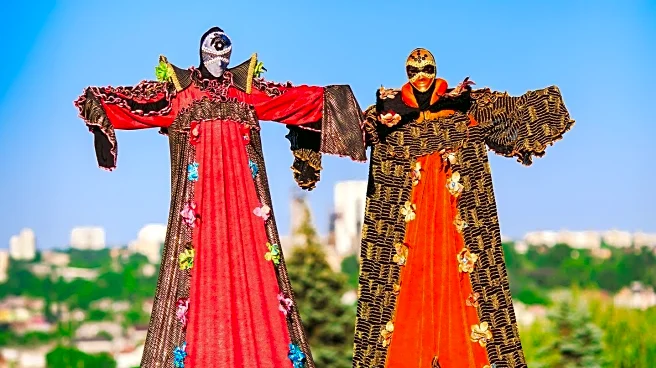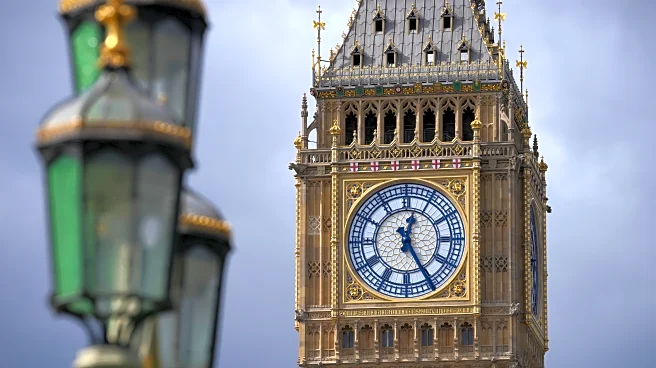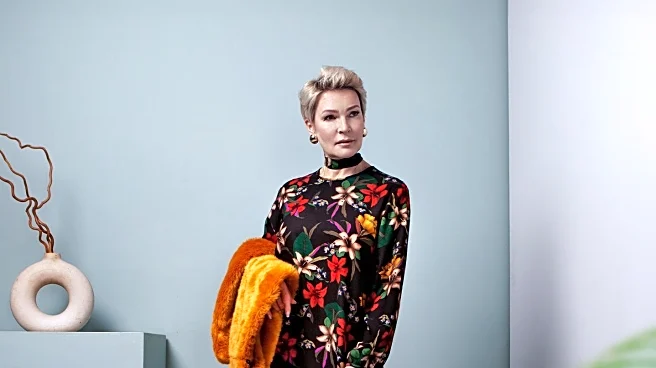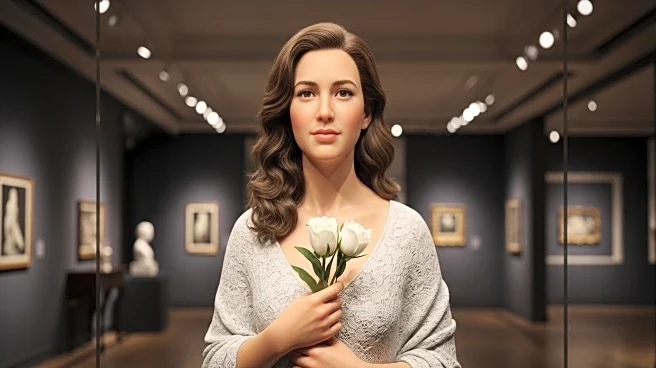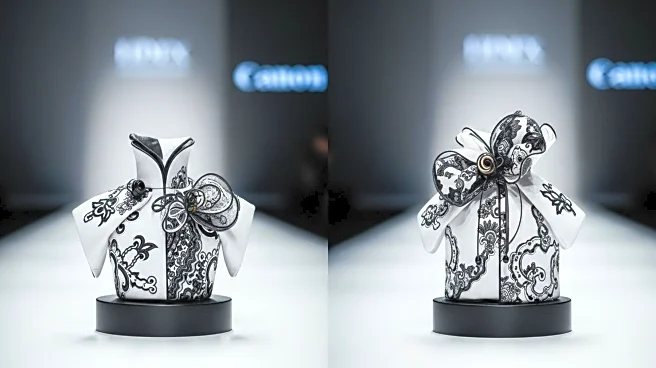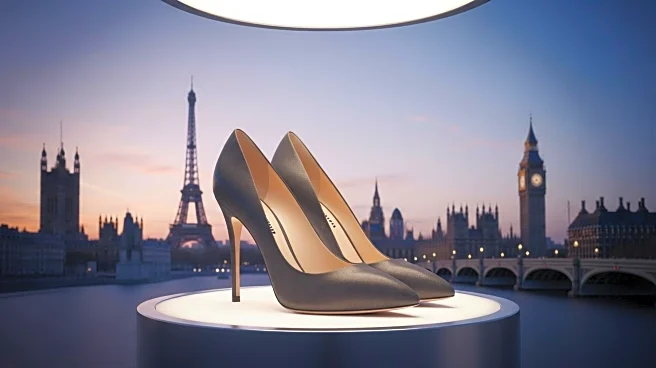What's Happening?
The National Theatre in London has converted its roof into a vibrant garden filled with dye plants to create natural colors for its costumes. The initiative aims to replace synthetic dyes, which are harmful to the environment and human health, with natural alternatives. Flowers such as indigo, dahlias, and hollyhocks are being used to produce vivid colors for the theatre's productions. The garden not only serves as a source of dyes but also as a refuge for wildlife and a peaceful space for actors. The theatre plans to use these natural dyes in all future productions.
Why It's Important?
This development represents a significant shift towards sustainability in the arts, addressing environmental and health concerns associated with synthetic dyes. By adopting natural dyeing methods, the National Theatre is setting a precedent for other cultural institutions to follow, potentially influencing broader industry practices. The initiative also enhances the theatre's role in promoting biodiversity and environmental stewardship, contributing positively to urban ecology.
What's Next?
The National Theatre plans to incorporate natural dyes into all its productions, starting with 'Playboy of the Western World.' This move may inspire other theatres and creative industries to explore sustainable practices. The success of the dye garden could lead to further expansion or similar projects in other locations, fostering a community of environmentally conscious artists and designers.
Beyond the Headlines
The use of natural dyes could lead to a cultural shift in how costumes are perceived, emphasizing craftsmanship and environmental responsibility. This approach may also influence consumer preferences, encouraging demand for sustainably produced goods in the fashion and textile industries.
